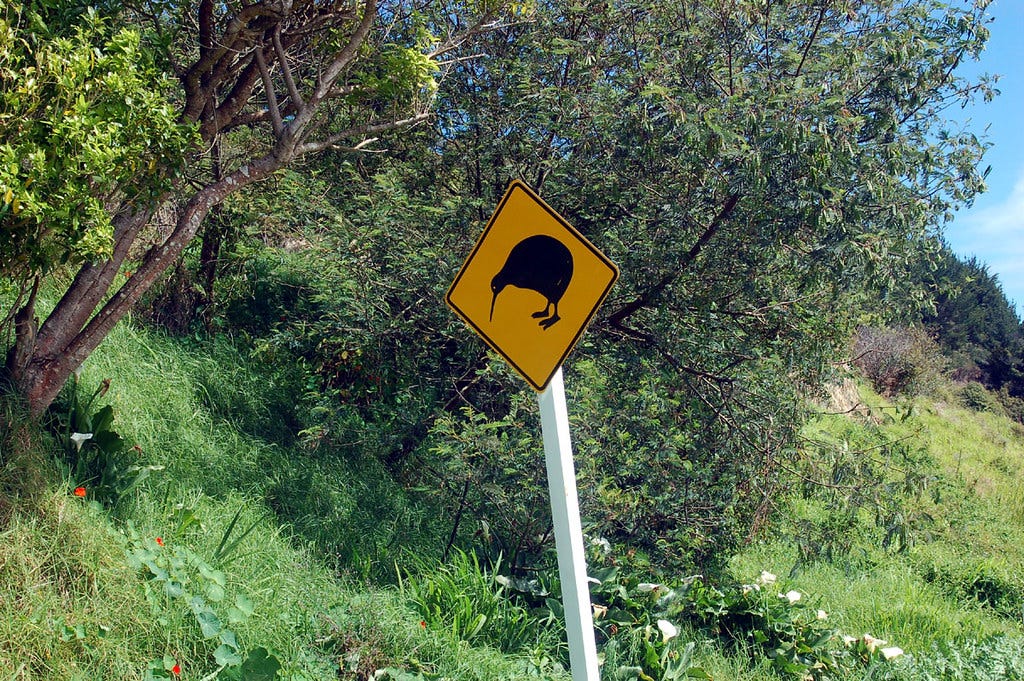Cutting trees and shooting opossums – a green budget, New Zealand style
Peter Bale writes stimulus legislation is all about boots on the ground and dead vermin.

By Peter Bale
(About the author: Peter Bale is a London-based journalist currently working under coronavirus lockdown in his native New Zealand. He’s worked for Reuters, the Financial Times, The Times, CNN, Microsoft and the Center for Public Integrity, among others.)
AUCKLAND, NEW ZEALAND (Callaway Climate Insights) — New Zealand, where a world-leading “hard and early” lockdown has strangled Covid-19 and ended community transmission, aims to offset the economic damage of the pandemic with investment in green projects to promote employment and infrastructure.
However, it’s still a struggle to get green policies implemented in a coalition government where the Labour Party of Prime Minister Jacinda Ardern operates in an often uncomfortable alliance with the Green Party and a nationalist group, New Zealand First.
Elections this September — and Ardern’s personal popularity and perceived confidence in handling Covid-19 — may open the chance for Labour to govern alone, but New Zealand First may again emerge as kingmaker and the strangler of environmental policies.
NZ First leader Winston Peters, a gritty sort of Grinch who blocks policy initiatives with a destructive glee, regards himself as a “handbrake” on what he suggests would otherwise be the runaway car of Labour Party spending pledges and “woke” socialism. Astoundingly, Peters — who is studiously undiplomatic — is also foreign minister.
This month, NZ First halted a flagship government policy to build a light rail network in the commercial capital, Auckland, where 1.7 million people live in a weird sort of South Pacific/LA-type love affair with the car and put up with a comical level of congestion and pollution.
Boots on the ground
The Green Party, meanwhile, can point to some actual achievements that benefit other humans. Its influence was evident in a so-called “green jobs” budget launched last month with a shift in government spending toward environmental protection and remediation.
It came on top of a major Covid-19 relief package including wage subsidies and direct support for various hard-hit industries, notably Air New Zealand and the rest of the tourism sector — and more bizarrely, the horse-racing industry. Of course, it was entirely coincidental in this close-knit country of five million that NZ First had a slush fund from the racing industry.
There’s an appealing fresh-air-and-mud feel to many of the measures in the NZ$1.1 billion (US$708 million) green investments announced in the annual budget of government spending. Not here empty promises to cut emissions: This is all about boots on the ground and dead vermin.
To understand just how real this package is, it’s worth remembering that animals considered cute elsewhere — and even endangered in some of their native habitats — are loathed here with a fiery passion that is taught from the earliest years at school. It’s considered a patriotic duty to join a local Landcare group and trap stoats and opossums and club them to death in suburban and rural parks if the traps haven’t done their deadly work.
Seals were the only native mammal that were ashore before the arrival of Maori with dogs from far Polynesia.
Natural born killers
Don’t even start New Zealanders on the legacy of European settlers who brought opossums, wallabies (a sort of short kangaroo), stoats, cats and all manner of murderous mammals. We want to kill them all before they kill our beloved birds.
And kill our birds they have. With no natural predators, many New Zealand birds evolved as slow-moving, avuncular and often ground-dwelling avians that were easy quarry, leading to epic extinctions and near-extinctions, jeopardizing even the national kiwi bird.
So, the Covid-19 green budget is investing directly in getting to grips with those rotters and other introduced species despoiling what foreigners often wrongly see as a pristine landscape which in fact is gashed, eroded and stripped for farming across vast swathes, leaving islands of gorgeous native forest which resonates with bird call.
In the budget there’s:
NZ$433 million (US$277 million) to fund 4,000 jobs over five years to restore rivers and estuaries
NZ$200 million ($128 million) in a “Jobs for Nature” fund to improve access to and the quality of recreational facilities on public conservation land
NZ$147.5 million ($94 million) for pest control and eradication, under the “Predator Free New Zealand” concept which is an ambition to rid the country of introduced predators by 2050.
NZ$100 million ($64 million) to get rid of introduced pine trees which spread from commercial forests by wind into private land and tracts of native species New Zealanders call “bush”.
NZ$27.5 million ($17.6 million) to get rid of growing populations of adorable-but-deadly-to-native-bush wallaby populations. (A colonial-era governor, Sir George Grey, introduced them to his private island north of Auckland when he wasn’t launching war against Maori.)
Hard yards on carbon
All this may seem relatively small next to the Ardern government’s world-leading commitment to net Zero Carbon by 2050 — a hard call in a country dependent on livestock for much of its farm output and whose people (like those Aucklanders) are in love with their cars, particularly SUVs and pickup trucks. (Sound familiar?)
However, New Zealanders are deadly serious about bringing death to opossums, stoats, wallabies. The country is a world leader in dealing death to unwanted mammals. Helicopters drop vast quantities of poisoned carrots and other bait and trails are lined with traps. So successful has the country become at eliminating vermin from some of its outlying islands that it has become a significant export industry in eradication expertise.
There’s money in them thar varmints.
